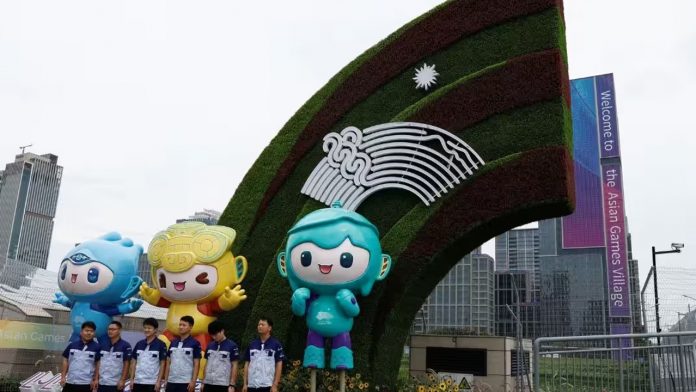On September 23, the 19th Asian Games in Hangzhou officially begin. Here are some of the origins of the medals, mascots, and symbol.
Emblem: Surging Tides
The shape of the instantly familiar Chinese fan, the Qiantang River, a tidal bore, running track lines, the Internet icon, and finally, on the top right, the glowing red sun of the Olympic Council of Asia, make up the six components of the Hangzhou Asian Games’ emblem. At the conclusion of the previous edition in 2018, it was revealed.
Mascots: trio of robots
The three mascots of the Games are a set of robots called Memories of Jiangnan, which refers to a region in eastern China south of the Yangtze River. The Liangzhu City Archaeological Ruins are symbolised by the yellow robot Congcong. The Cong jade pendant, the emblematic artefact discovered in the Ruins, inspired the name. Lianlian, a green robot, is a representation of West Lake, another World Heritage site. The luxuriant lotus leaves are what gave rise to the name.
Chenchen, a blue robot, stands in for the Beijing-Hangzhou Grand Canal, another item on the World Heritage list. Its name comes from the Gongchen Bridge, a well-known landmark on the Grand Canal in Hangzhou.
The medals that the athletes in Hangzhou will receive appear to be somewhat square in shape, as opposed to the more frequently seen circular medals. The Liangzhu Culture medals (5,300 BC–4300 BC) are distinguished by the ceremonial jade Cong. On the inside, the square jade is joined to a round medal. The entire medal showcases Hangzhou’s regional characteristics. On the front of the medal, there are pronounced lines that surround the pictorial scroll of Hangzhou. Then, on one side, the city, a rippling lake, and mountains beyond are visible. The area is surrounded by hazy hills on three sides. Like a square seal, the reverse is shaped.














